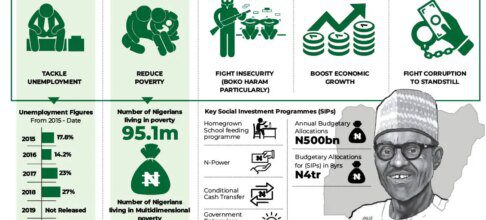- The US Dollar set to close off this week at a substantial loss.
- US Jobs report confirms uptick in unemployment and employers not willing to pay more for labor force.
- The US Dollar Index trades below 103.00, and looks to close off this week in the mid 102.00's.
Daily digest market movers: Dust settles
- The US Jobs Report for February delivered some surprises:
- Nonfarm Payrolls growth came in at 275,000, above expectations. Though traders ignored the number and rather saw the downward revision from the previous 353,000 to 229,000 as a negative surprise.
- Growth in Yearly Average Hourly Earnings fell slightly as expected from 4.4% to 4.3%.
- Monthly Average Hourly Earnings shrunk from 0.6% to only 0.1%.
- The Unemployment Rate was the last big surprise with an uptick from 3.7% to 3.9%.
- Equities are flat to mildly in the green after the Asia closing. Equities were on fire on Thursday after Powell commented that the Fed is ready to cut once data falls in line.
- According to the CME Group’s FedWatch Tool, expectations for a Fed pause in the March 20 meeting are at 95%, while chances of a rate cut stand at 5%.
- The benchmark 10-year US Treasury Note trades around 4.09%, the lowest level in over a week.
US Dollar Index Technical Analysis: Some profit taking on US Dollar short underway for next week
The US Dollar Index (DXY) is ready to settle in the middle of the 102-range after bleeding severly when the Greenback got injured again on the recent release of the US Jobs Report. The biggest element to take away is that Unemployment is starting to rise, together with employers unwilling to pay substantially more to keep or hire personel. This could be the first signal that the job market is turning and more downbeat and negative data is set to come out in the coming weeks. On the upside, the first reclaiming ground is at 103.28, the 55-day Simple Moving Average (SMA), and at the 200-day SMA near 103.72. Once broken through, the 100-day SMA is popping up at 103.81, so a bit of a double cap in that region. Depending on the catalyst that pushes the DXY upwards, 104.60 remains the key level on the topside. The DXY is trading a bit in nomad's land, with not really any significant support levels nearby. More downside looks inevitable with 101.75 up next, which bears some pivotal relevance. Once through there, the road is open for another leg lower to 100.61, the low of 2023.
Fed FAQs
Monetary policy in the US is shaped by the Federal Reserve (Fed). The Fed has two mandates: to achieve price stability and foster full employment. Its primary tool to achieve these goals is by adjusting interest rates. When prices are rising too quickly and inflation is above the Fed’s 2% target, it raises interest rates, increasing borrowing costs throughout the economy. This results in a stronger US Dollar (USD) as it makes the US a more attractive place for international investors to park their money. When inflation falls below 2% or the Unemployment Rate is too high, the Fed may lower interest rates to encourage borrowing, which weighs on the Greenback.
The Federal Reserve (Fed) holds eight policy meetings a year, where the Federal Open Market Committee (FOMC) assesses economic conditions and makes monetary policy decisions. The FOMC is attended by twelve Fed officials – the seven members of the Board of Governors, the president of the Federal Reserve Bank of New York, and four of the remaining eleven regional Reserve Bank presidents, who serve one-year terms on a rotating basis.
In extreme situations, the Federal Reserve may resort to a policy named Quantitative Easing (QE). QE is the process by which the Fed substantially increases the flow of credit in a stuck financial system. It is a non-standard policy measure used during crises or when inflation is extremely low. It was the Fed’s weapon of choice during the Great Financial Crisis in 2008. It involves the Fed printing more Dollars and using them to buy high grade bonds from financial institutions. QE usually weakens the US Dollar.
Quantitative tightening (QT) is the reverse process of QE, whereby the Federal Reserve stops buying bonds from financial institutions and does not reinvest the principal from the bonds it holds maturing, to purchase new bonds. It is usually positive for the value of the US Dollar.
Information on these pages contains forward-looking statements that involve risks and uncertainties. Markets and instruments profiled on this page are for informational purposes only and should not in any way come across as a recommendation to buy or sell in these assets. You should do your own thorough research before making any investment decisions. FXStreet does not in any way guarantee that this information is free from mistakes, errors, or material misstatements. It also does not guarantee that this information is of a timely nature. Investing in Open Markets involves a great deal of risk, including the loss of all or a portion of your investment, as well as emotional distress. All risks, losses and costs associated with investing, including total loss of principal, are your responsibility. The views and opinions expressed in this article are those of the authors and do not necessarily reflect the official policy or position of FXStreet nor its advertisers. The author will not be held responsible for information that is found at the end of links posted on this page. If not otherwise explicitly mentioned in the body of the article, at the time of writing, the author has no position in any stock mentioned in this article and no business relationship with any company mentioned. The author has not received compensation for writing this article, other than from FXStreet. FXStreet and the author do not provide personalized recommendations. The author makes no representations as to the accuracy, completeness, or suitability of this information. FXStreet and the author will not be liable for any errors, omissions or any losses, injuries or damages arising from this information and its display or use. Errors and omissions excepted.
The author and FXStreet are not registered investment advisors and nothing in this article is intended to be investment advice.













